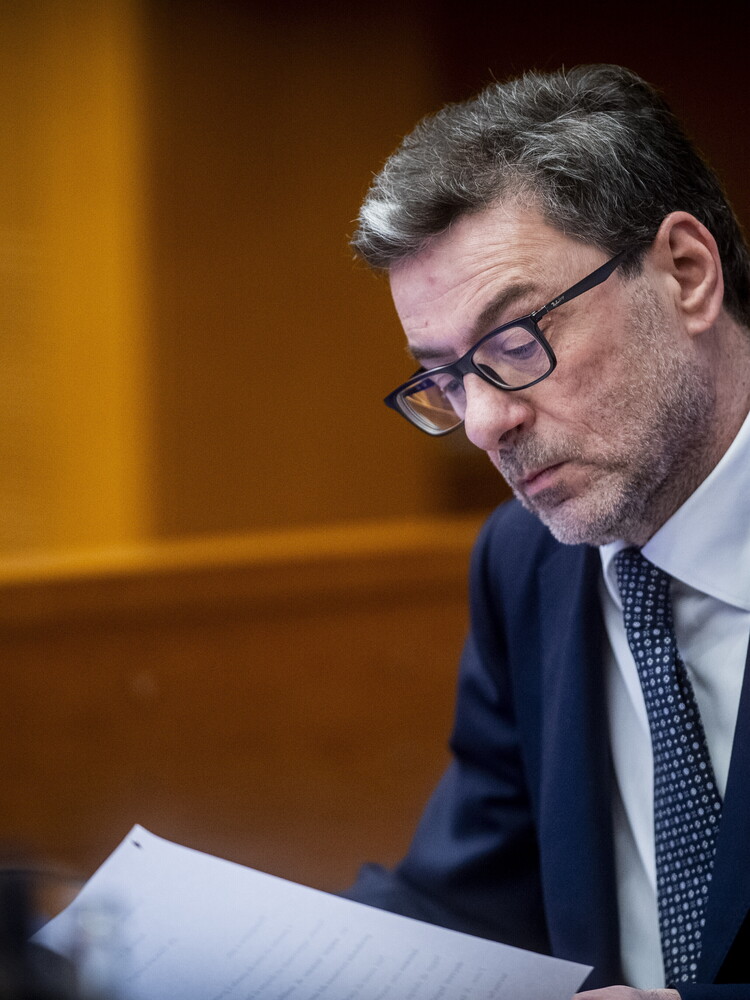Structural budget plan “leaves no one behind” and focuses “on the sustainability of the pension system and the quality of the healthcare system”. In the preamble of the PSB, sent to Parliament shortly after Midnight, the Minister of Economy Giancarlo Giorgetti sets priority objectives for public spending in the coming years, despite an international context subjected to vulnerability given the two ongoing conflicts in Ukraine and the Middle East. The plan, examined yesterday in the Council of Ministers, will be examined by Parliament on 8 October, then will be sent to Brussels, trying to draw a trajectory for exit from the EU excessive deficit procedure by 2026.
“The biggest challenge for the country is represented byhigh stock of public debt and the related interest charge. They have displaced any margin for designing public policies to support growth in recent decades”, analyzes Giorgetti. The public debt is close to 3 thousand billion.
The owner of the Mef highlights the theme ofdemographic winter. “In the long term, the sustainability of welfare depends on demographics, the Plan strengthens family policies, to support birth rates and parenthood, with better services for families and dedicated incentives”. The document talks about strengthening the single allowance and reviewing parental leave in the sense of “contributing to a rebalancing of care loads within the family” between men and women and “facilitating mothers’ permanence in the labor market”.
The Psb, notes Giorgetti, “aims at a gradual but decisive reduction in the deficit and public debt in relation to GDP while promoting sustainable growth, combating demographic decline and confirming the tax reductions introduced in the last two years and the commitment to the implementation of the tax reform enabling law”.
The objectives on the accounts
The Government has set itself the objective of bringing the deficit/GDP ratio to 3.3% in 2025 and 2.8% in 2026 to exit the procedure for excessive deficit opened by the EU last June. The plan confirms the trajectory of net primary spending over the next 7 years (reference time horizon) with an average growth rate close to 1.5%. Net primary expenditure growth rates are forecast at: 1.3% in 2025; 1.6% in 2026; 1.9% in 2027; 1.7% in 2028; 1.5% in 2029; 1.1% in 2030 and 1.2% in 2031.
The ratio between debt and GDP in the coming years, especially in the period 2024-2026, will continue to be strongly influenced by the impact on the cash needs of tax compensations linked to A superb building introduced starting from 2020. The number of building bonuses subject to invoice discounts and transfers in the spring reached 219 billion euros. The deficit will fall below 3% in 2026 and below 2% in 2029.
The Government confirms and makes structural, through the next budget law, the effects of tax wedge on earned income employee up to 35 thousand euros and the consolidation of Irpef rates into three brackets already in force since May. And then the resources necessary for the renewal of public contracts, the financing of measures to encourage the birth rate and the refinancing of peacekeeping missions”.
“The situation is improving”
Giorgetti notes: “Italy’s economic, employment and public finance situation is improving despite the fall in industrial production levelsthe worrying expansion of international conflicts and technological and environmental challenges of growing complexity”. The Psb on the subject of recovering tax evasion specifies that Italy intends to consolidate the results achieved in the medium term, promoting the “strengthening of existing measures, including through the introduction of more effective control strategies and timely sanctions, as well as the adoption of a more collaborative approach between the financial administration and taxpayers, which increases voluntary compliance”.
The Parliamentary Budget Office has validated the trend macroeconomic framework after the latest Istat update contained in the Psb. According to the PBO, the trend macroeconomic scenario of the 2024 PSB falls within an “acceptable range in relation to the main economic variables”, although in several cases “the forecasts are placed at the upper end of the PBO panel estimates”.

janessadfdixon – 3D Artist | Pinshape
Chordie Guitar Chords and Lyrics
Carrillo Medeiros | Willys For Sale – Free Classifieds
Certificate verification problem detected
AnabellesHendricks | Songtree artist profile
Furry Paws // Description of keshawneblack isabellaeconway's Kennel
Landmark Air, Fyshwick, Australia | Home Service
AntoinesdCooke on Doodle or Die
paizo.com – Paizo People: samarafgwalter
desinsectisation 93 Seine-Saint-Denis 1.pdf
桃園市上大國民小學 – zooshell0 的帳號內容
Sage Keith – CakesDecor
Kullanıcı: rabbirocket8 – Sınav Soruları
Swift and Easy MS Toolkit Activator Download for Windows and MS Office Users
deathaugust5, Author at DeMilked
Jayce Lucas – Profile
Jordyn Soto (AmarisNovak) – Undrtone – share and discover music you love
Looking into Bangkok's Famous Riverfront: An Insider's Overview to Riverboat Tours and Destinations
Kymani Bolton | The Quest for Sourdough
Tomas Hardin (KildareStreet.com)
paizo.com – Paizo People: jayfsharp
Furry Paws // Description of Dulce Gill's Kennel
Nedergaard McCormack (@sugarspider0) | Unsplash Photo Community
giancarloffrye’s Map Room • mappery
Tran Larsson Larsson's events
The Reasons Why You Should Download MS Toolkit Activator for MS Windows and MS Office? – Online Notepad
Chordie Guitar Chords and Lyrics